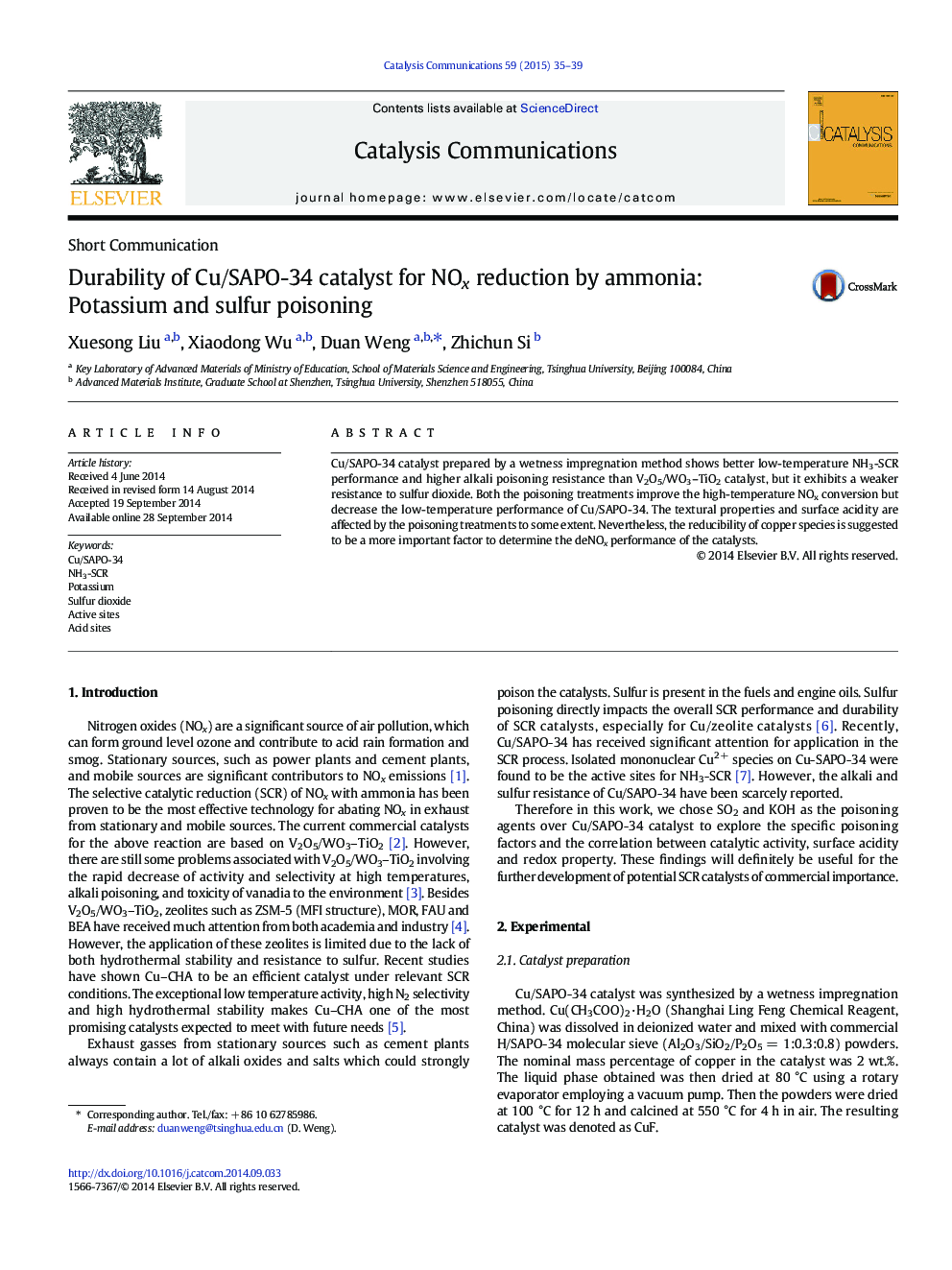| Article ID | Journal | Published Year | Pages | File Type |
|---|---|---|---|---|
| 49512 | Catalysis Communications | 2015 | 5 Pages |
•Cu/SAPO-34 owns much higher alkali poisoning resistance than V2O5/WO3–TiO2 catalyst.•K-impregnation affects active copper sites slightly due to pore structure of zeolite.•The formation of copper sulfates deactivates the catalyst at low temperatures.•Both the poisoned catalysts show higher NH3-SCR activities at high temperatures.
Cu/SAPO-34 catalyst prepared by a wetness impregnation method shows better low-temperature NH3-SCR performance and higher alkali poisoning resistance than V2O5/WO3–TiO2 catalyst, but it exhibits a weaker resistance to sulfur dioxide. Both the poisoning treatments improve the high-temperature NOx conversion but decrease the low-temperature performance of Cu/SAPO-34. The textural properties and surface acidity are affected by the poisoning treatments to some extent. Nevertheless, the reducibility of copper species is suggested to be a more important factor to determine the deNOx performance of the catalysts.
Graphical abstractThe effects of poisoning treatment on Cu/SAPO-34 synthesized by a wetness impregnation method improve the high-temperature activity and decrease the low-temperature activity.Figure optionsDownload full-size imageDownload as PowerPoint slide
